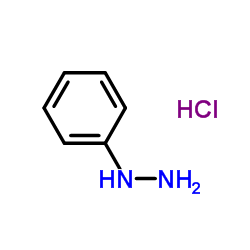89-25-8
| Name | edaravone |
|---|---|
| Synonyms |
1-PHENYL-3-METHYL-5-PYRAZALONE
3-methyl-1-phenyl-1H-pyrazol-5(4H)-one 2,4-dihydro-5-methyl-2-phenyl-3h-pyrazol-3-one 5-methyl-2-phenyl-2,4-dihydro-3H-pyrazol-3-one 3-methyl-1-phenyl-4,5-dihydro-1H-pyrazol-5-one 1-PHENYL-3-METHYL-5-PYRAZOLONE 1-PHENYL-3-METHYL-5-PYRAZOLE 3-METHYL-1-PHENYL-2-PYRAZOLIN-5ONE MFCD00003138 1-PHENYL-3-METHYL-5- PYRAZOLONE 3-METHYL-1-PHENYL-2-PYRAZOLIN-5-ONE FOR SYNTHESIS 3-METHYL-1-PHENYL-2-PYRAZOLIN-5-ON 3-Methyl-1-phenyl-2-pyrazolin-5-one 3-Methyl-1-phenyl-5-pyrazolone c.i. developer 1 3-Methyl-1-phenyl-2-pyrazoline-5-one 3-METHYL-1-PHENYL-2-PYRAZOLINE-5-ONE / EDARAVONE 1-PHENYL-3-METHYL-5-OXO-2-PYRAZOLINE 1-PHENYL-3-METHYL-2-PYRAZOLIN-5-ONE Edaravone (MCI-186) 5-METHYL-2-PHENYL-1,2-DIHYDROPYRAZOL-3-ONE EDARAVONE 3-METHYL-1-PHENYL-2-PYRAZOLIN-5-ONE (EDARAVONE) 1-pheny-3-methyl-5-pyrazolone (PMP) 5-Methyl-2-phenyl-1,2-dihydropyrazol-3-one EINECS 201-891-0 |
| Description | Edaravone is a strong novel free radical scavenger, and inhibits MMP-9-related brain hemorrhage in rats treated with tissue plasminogen activator. |
|---|---|
| Related Catalog | |
| In Vitro | Edaravone performs both preventative and therapeutic effects against toxicity of glutamate. Pretreatment of edaravone reduces the toxicity of glutamate towards SGNs. Edaravone reduces apoptosis and necrosis caused by glutamate. Pretreatment of edaravone (500 μM) reverses these changes to approximately normal levels. The protective effect of edaravone on SGNs against glutamate-induced apoptosis is associated with PI3K/Akt pathway and Bcl-2 protein family[4]. |
| In Vivo | Edaravone exerts neuroprotective effects by inhibiting endothelial injury and by ameliorating neuronal damage in brain ischemia. Edaravone provides the desirable features of NOS: it increases eNOS (beneficial NOS for rescuing ischemic stroke) and decreases nNOS and iNOS (detrimental NOS). Post-reperfusion brain edema and hemorrhagic events induced by thrombolytic therapy may be reduced by edaravone pretreatment[1]. Edaravone significantly decreases infarct volume, with the average infarct volume in the edaravone-treated rats (227.6 mm3) being significantly lower than that in the control rats (264.0 mm3). Edaravone treatment also decreases the postischemic hemorrhage volumes (53.4 mm3 in edaravone-treated rats vs 176.4 mm3 in controls). In addition, the ratio of hemorrhage volume to infarct volume is lower in the edaravone-treated rats (23.5%) than in the untreated rats (63.2%)[2]. In edaravone (20 mg/kg)-treated rats, astrocyte activity (glial fibrillary acidic protein) and apoptotic cells (caspase-3) are decreased on the corpus callosum, germinal matrix, and cerebral cortex[3]. |
| Cell Assay | Cell viability is quantified by MTT assay and trypan blue staining. MTT (5 mg/mL, 20 μL) is added to each well and incubated for 4 h at 37°C after the drug treatments. The medium is removed and the cell pellet is dissolved in DMSO. Then, the optical density (OD) values are measured at 570 nm using an ELISA reader. |
| References |
| Density | 1.2±0.1 g/cm3 |
|---|---|
| Boiling Point | 333.0±11.0 °C at 760 mmHg |
| Melting Point | 126-128 °C(lit.) |
| Molecular Formula | C10H10N2O |
| Molecular Weight | 174.199 |
| Flash Point | 155.2±19.3 °C |
| Exact Mass | 174.079315 |
| PSA | 32.67000 |
| LogP | 0.44 |
| Vapour Pressure | 0.0±0.7 mmHg at 25°C |
| Index of Refraction | 1.606 |
| Storage condition | Store at RT |
| Water Solubility | 3 g/L (20 ºC) |
CHEMICAL IDENTIFICATION
HEALTH HAZARD DATAACUTE TOXICITY DATA
MUTATION DATA
|
| Symbol |

GHS07 |
|---|---|
| Signal Word | Warning |
| Hazard Statements | H302-H315-H319-H335 |
| Precautionary Statements | P261-P305 + P351 + P338 |
| Personal Protective Equipment | dust mask type N95 (US);Eyeshields;Gloves |
| Hazard Codes | Xi:Irritant |
| Risk Phrases | R36/37/38 |
| Safety Phrases | S26-S36 |
| RIDADR | NONH for all modes of transport |
| WGK Germany | 1 |
| RTECS | UQ9625000 |
| HS Code | 2933199090 |
| Precursor 8 | |
|---|---|
| DownStream 9 | |
| HS Code | 2933199090 |
|---|---|
| Summary | 2933199090. other compounds containing an unfused pyrazole ring (whether or not hydrogenated) in the structure. VAT:17.0%. Tax rebate rate:13.0%. . MFN tariff:6.5%. General tariff:20.0% |













![2-Phenyl-4-[[4-(dimethylamino)phenyl]imino]-5-methyl-2H-pyrazole-3(4H)-one structure](https://image.chemsrc.com/caspic/398/1456-89-9.png)
![4-[(4-chlorophenyl)-(5-methyl-3-oxo-2-phenyl-1H-pyrazol-4-yl)methyl]-5-methyl-2-phenyl-1H-pyrazol-3-one structure](https://image.chemsrc.com/caspic/263/143699-06-3.png)



